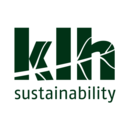Modern slavery and the supply chain
The Modern Slavery Act was introduced in March 2015 to tackle slavery in the UK and in the supply chains of major UK corporations. It aims to prevent modern slavery in organisations by increasing the transparency of company practices.
The Act requires businesses with an annual turnover of above £36 million to publish an annual statement that details the steps taken to ensure that slavery and human trafficking are not taking place in the business or supply chains. By making this information public, the Act is designed to increase public scrutiny on the measures taken by larger companies to remove reliance on slavery.
Historically, the construction industry has performed poorly in preventing modern slavery. For example, in 2013, 52 potential victims of modern slavery in the UK were identified as coming from the construction industry. Materials procurement can also be problematic; a recent UNICEF report stated that 38% of children in parts of Rajasthan, India were working in the stone quarrying industry. Under the new legislation, the construction industry will therefore come under particular scrutiny in terms of both its employment procedures and supply chains.
The Act will help to promote a more holistic understanding of sustainable procurement. While the environmental performance of the building industry has improved in recent years thanks to schemes such as BREEAM, the social consequences of design, materials specified, and construction methods have not undergone the same level of scrutiny. The large scope of the supply chains employed by major construction companies offers a real opportunity to help instil progressive improvements to the lives of people who contribute to these supply chains, thereby committing construction to both environmental and social sustainability.
Supply chain transparency should be a factor in the selection of materials. If a supplier cannot identify where the raw materials for their products has come from, how can a designer be sure that there is no bonded, slave or child labour involved in the supply chain? If architects, engineers and procurement professionals start to ask these questions alongside quality, cost and environmental performance, the supply chain will have to respond. During construction, relevant checks should be carried out to ensure that members of the workforce have not been victims of human trafficking.
However, the Act does have several caveats. The primary concern is that it does not legally require companies to guarantee that their services are slave-free, nor are there any criminal or financial penalties for non-compliance. While the new provision may affect the reputation of companies who do fail to comply, empirical outcomes from a similar piece of legislation in California (the California Transparency in Supply Chains Act) shows that many companies choose not to publish statements regardless. Secondly, the extent to which the steps outlined in these annual statements will have an impact on combatting slavery is questionable. In the aforementioned Indian sandstone industry, only 5-7% of Indian sandstone is exported, and only one-fifth of this ends up in the UK; the power of British buyers to instigate a shift in working practices abroad may therefore be limited.
The Modern Slavery Act is still very much in the early stages of implementation. Construction companies will need time to process its requirements and embed it as standard company practice. Assessing its success will be yet another case of “time will tell”. Although its ability to prevent exploitation of vulnerable people – especially in developing countries – may be debatable, its power to raise public awareness of modern slavery and encourage corporate accountability from the bottom up should not be underestimated.
[edit] Find out more
[edit] Related articles on Designing Buildings Wiki
- Australian ethical labour sourcing standard.
- Building a fairer system: Tackling modern day slavery.
- Construction and the Modern Slavery Act.
- Ethical labour sourcing standard.
- Ethical sourcing.
- Ethics in construction.
- Gangmaster.
- Gangmasters and Labour Abuse Authority (GLAA).
- Modern Slavery Act and sustainable supply chains.
- Modern slavery toolkit.
- Time to face up: Modern slavery in the construction industry.
Featured articles and news
Homes England supports Greencore Homes
42 new build affordable sustainable homes in Oxfordshire.
Zero carbon social housing: unlocking brownfield potential
Seven ZEDpod strategies for brownfield housing success.
CIOB report; a blueprint for SDGs and the built environment
Pairing the Sustainable Development Goals with projects.
Types, tests, standards and fires relating to external cladding
Brief descriptions with an extensive list of fires for review.
Latest Build UK Building Safety Regime explainer published
Key elements in one short, now updated document.
UKGBC launch the UK Climate Resilience Roadmap
First guidance of its kind on direct climate impacts for the built environment and how it can adapt.
CLC Health, Safety and Wellbeing Strategy 2025
Launched by the Minister for Industry to look at fatalities on site, improving mental health and other issues.
One of the most impressive Victorian architects. Book review.
Common Assessment Standard now with building safety
New CAS update now includes mandatory building safety questions.
RTPI leader to become new CIOB Chief Executive Officer
Dr Victoria Hills MRTPI, FICE to take over after Caroline Gumble’s departure.
Social and affordable housing, a long term plan for delivery
The “Delivering a Decade of Renewal for Social and Affordable Housing” strategy sets out future path.
A change to adoptive architecture
Effects of global weather warming on architectural detailing, material choice and human interaction.
The proposed publicly owned and backed subsidiary of Homes England, to facilitate new homes.
How big is the problem and what can we do to mitigate the effects?
Overheating guidance and tools for building designers
A number of cool guides to help with the heat.
The UK's Modern Industrial Strategy: A 10 year plan
Previous consultation criticism, current key elements and general support with some persisting reservations.
Building Safety Regulator reforms
New roles, new staff and a new fast track service pave the way for a single construction regulator.























